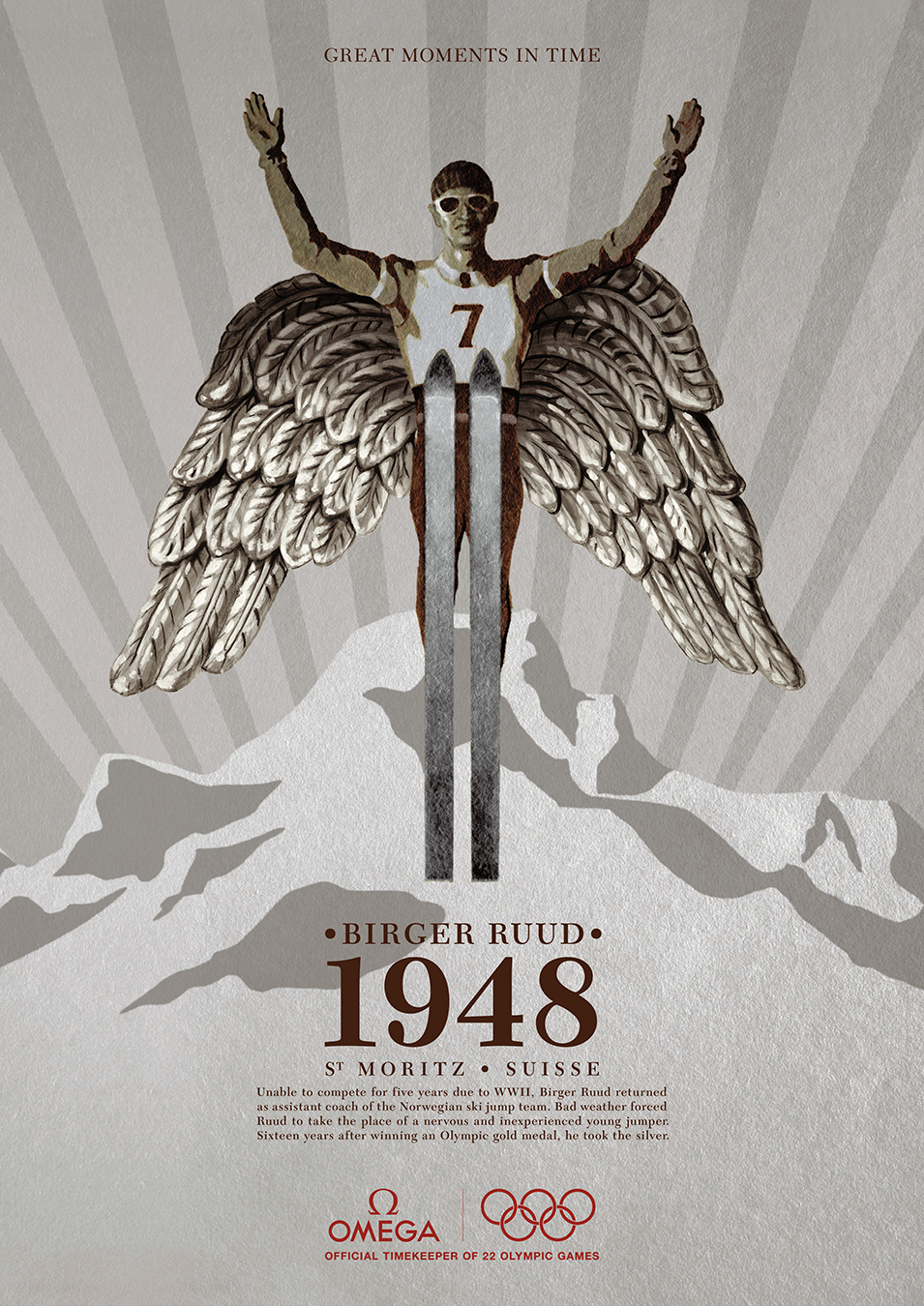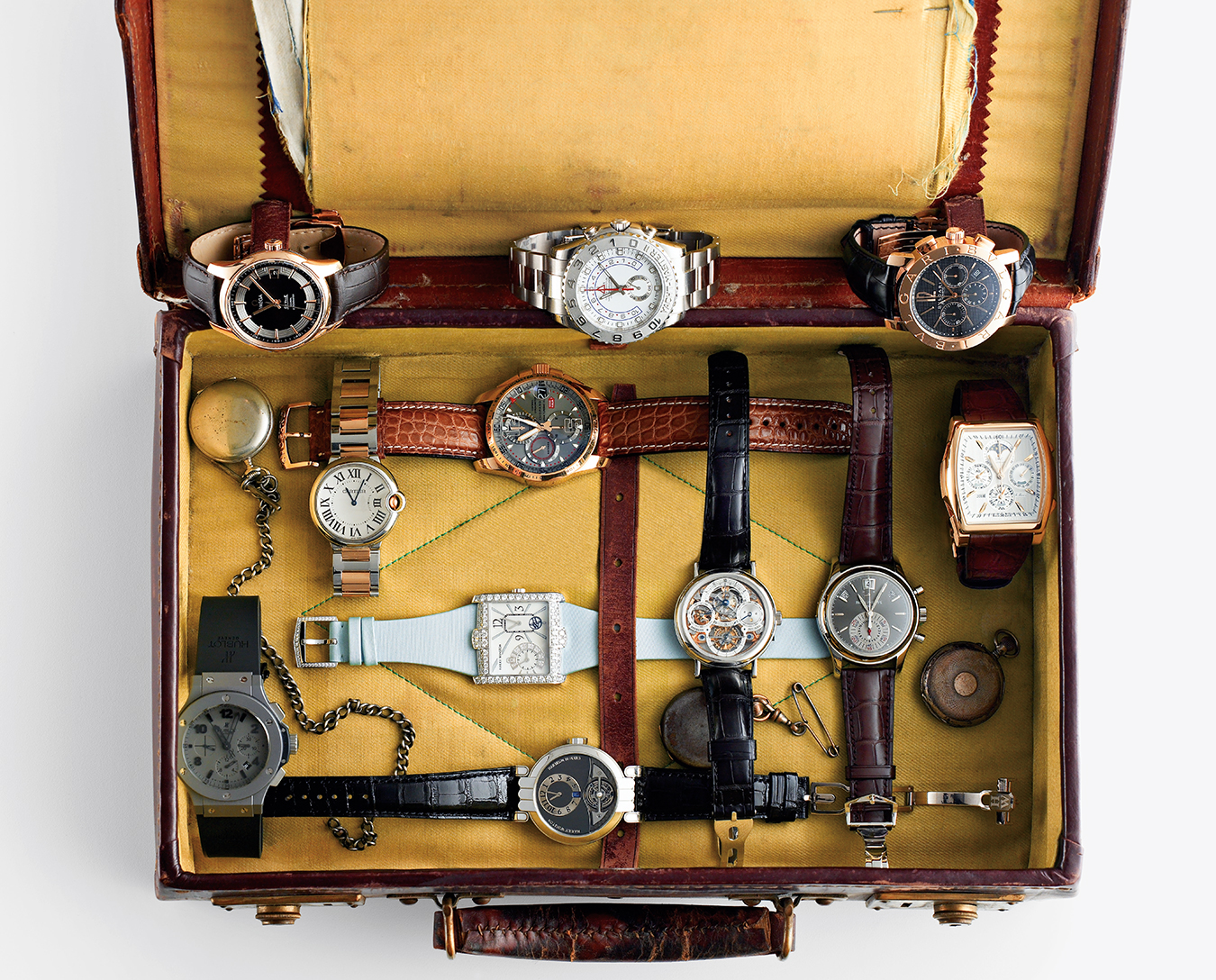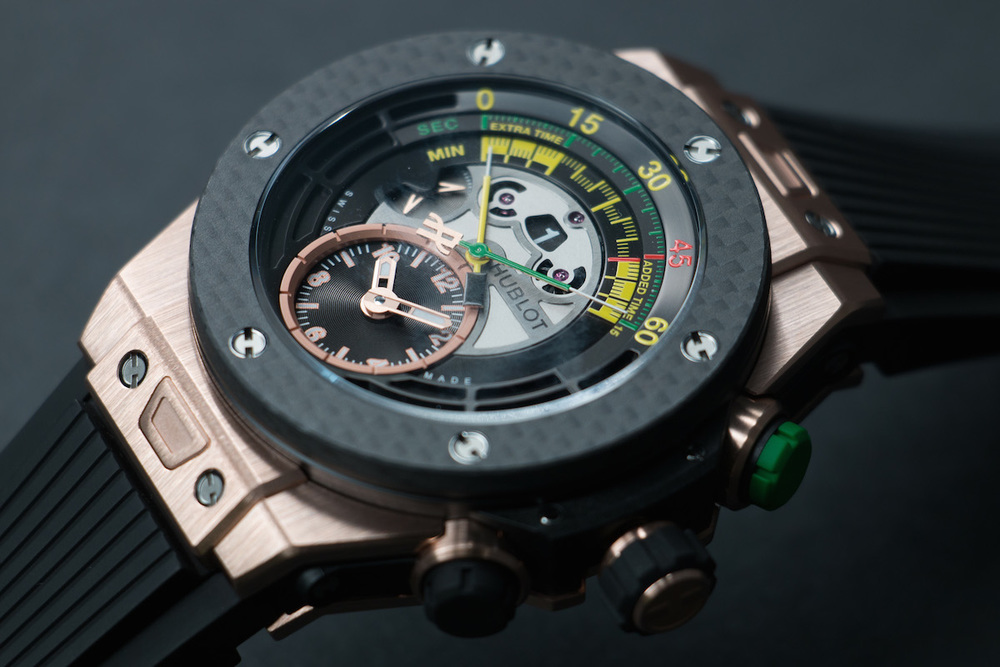The First Watch on the Moon: the Omega Speedmaster
A history of the Moonwatch.
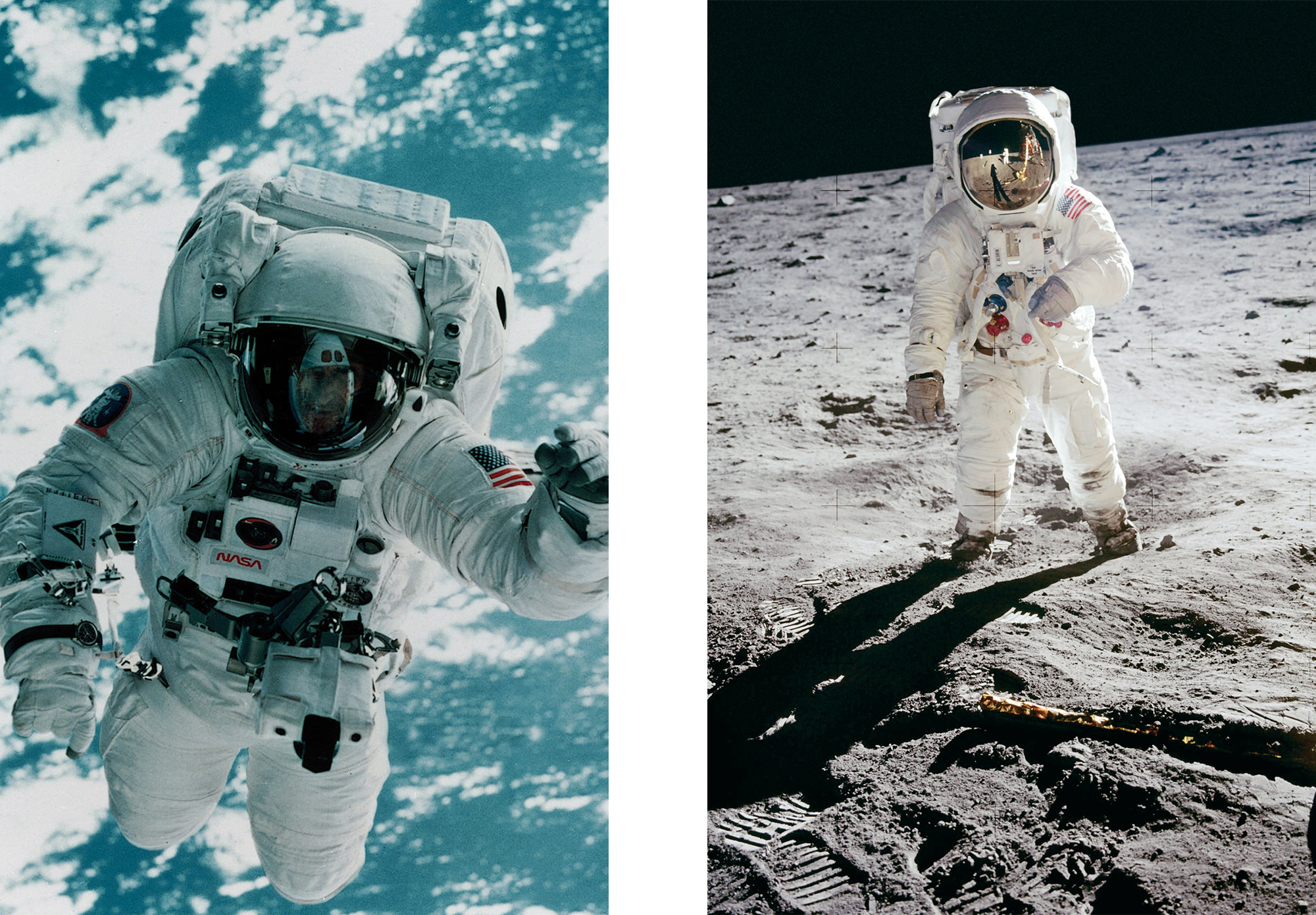
The 1960s: an era of political and social unrest that went hand in hand with unparalleled scientific advancement. The sixties were Vietnam. They were also the Beatles and flower power. They were the assassinations of political leaders, but they were also movements in support of civil and human rights. On September 12, 1962, a fired-up President John F. Kennedy announced to an audience at Rice University in Houston, Texas, that before the decade was finished, America was determined to land a man on the moon and bring him back safely to Earth, saying: “We choose to go to the moon in this decade and do other things, not because they are easy, but because they are hard.”
President Kennedy’s vision came true, of course. On July 20, 1969, at 2:56 GMT, the late astronaut Neil Armstrong stepped onto the lunar surface. On that day, Armstrong and his co-pilot, Col. Edwin E. Aldrin Jr., known as Buzz, steered their lunar landing craft, Eagle, to a rock-strewn plain near the southwestern shore of the Sea of Tranquillity.
“Houston, Tranquillity Base here,” Armstrong radioed to mission control. “The Eagle has landed.”
“Roger, Tranquillity,” mission control replied. “We copy you on the ground. You’ve got a bunch of guys about to turn blue. We’re breathing again. Thanks a lot.”
The same could have been said for hundreds of millions of people around the world watching on television. A then-23-year-old, Stephen Urquhart, in the early days of his career, was listening to the events unfold on headphones in Biel, Switzerland. “I was listening in to the Apollo 11 landing just for one reason,” says Urquhart, the now-69-year-old president of Omega. “I was told to write down if ever the word Omega was mentioned.”
For, on a Velcro strap that fit comfortably around the sleeve of a spacesuit was the Omega Speedmaster. Although Armstrong was the first to set foot on the moon, he left his Speedmaster in the lunar module. Aldrin elected to wear his. “Few things are less necessary when walking around the moon than knowing what time it is in Houston, Texas,” Aldrin later wrote. “Nonetheless, being a watch guy, I decided to strap the Speedmaster onto my right wrist around the outside of my bulky spacesuit.”
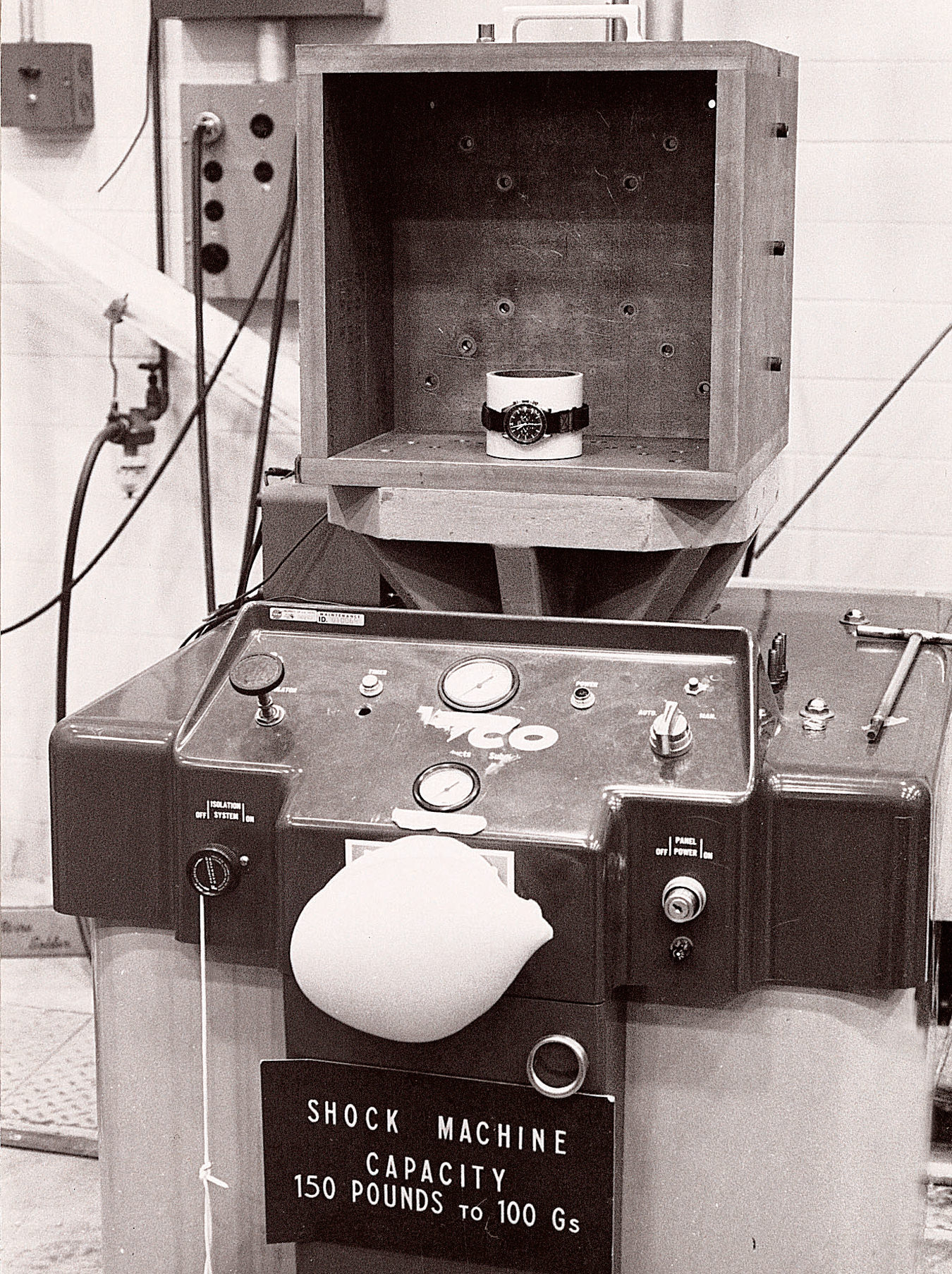
The watches underwent a series of tests by NASA—the most rigorous trials in the history of horology.
The Speedmaster’s association with space exploration began in 1962 when NASA astronaut Walter “Wally” Schirra purchased his flight watch: the second generation Speedmaster model with the reference CK2998. Schirra’s personal chronograph was the very first Speedmaster to fly on a space mission during the Mercury-Atlas 8 (Sigma 7) mission. Two years later, astronaut Donald Kent “Deke” Slayton issued an internal memo stating the need for a “highly durable and accurate chronograph to be used by flight crews.” The memo landed on the desk of NASA engineer James Ragan, who sent a Request for Quotations and a specification sheet for wrist chronographs to various manufacturers (Breitling, Longines, and Rolex among them). Omega’s copy of the request was received by its U.S. affiliate in New York, who proposed and delivered three Speedmasters with the reference ST105.003.
“The Speedmaster, which we launched in 1957,” explains Urquhart, “was conceived as a tool that, with its tachymetric scale, would help drivers determine the speed with which they travelled between two points. Little did we know that, less than a decade later, it would be on the wrists of NASA’s astronauts.”
The watches underwent a series of tests by NASA—the most rigorous trials endured in the history of horology. The watches were subjected to high temperatures ranging from 71°C to 93°C, over a two-day period, after which they were frozen at -18°C; they were given a rapid succession 15-cycle test where they were heated to 71°C for 45 minutes and then immediately cooled to -18°C for 45 minutes; they spent 240 hours in a relative-humidity atmosphere of 93 per cent and 48 hours in an atmosphere of highly corrosive 100 per cent oxygen; they endured noise levels reaching 130 decibels; they were placed in a vacuum chamber heated to 93°C; they were vibrated for three 30-minute cycles with average accelerations of 8.8 g-force per impulse; they endured shock tests of 40 g-force shocks in six different directions. In the end, the Omega Speedmaster was the sole survivor.
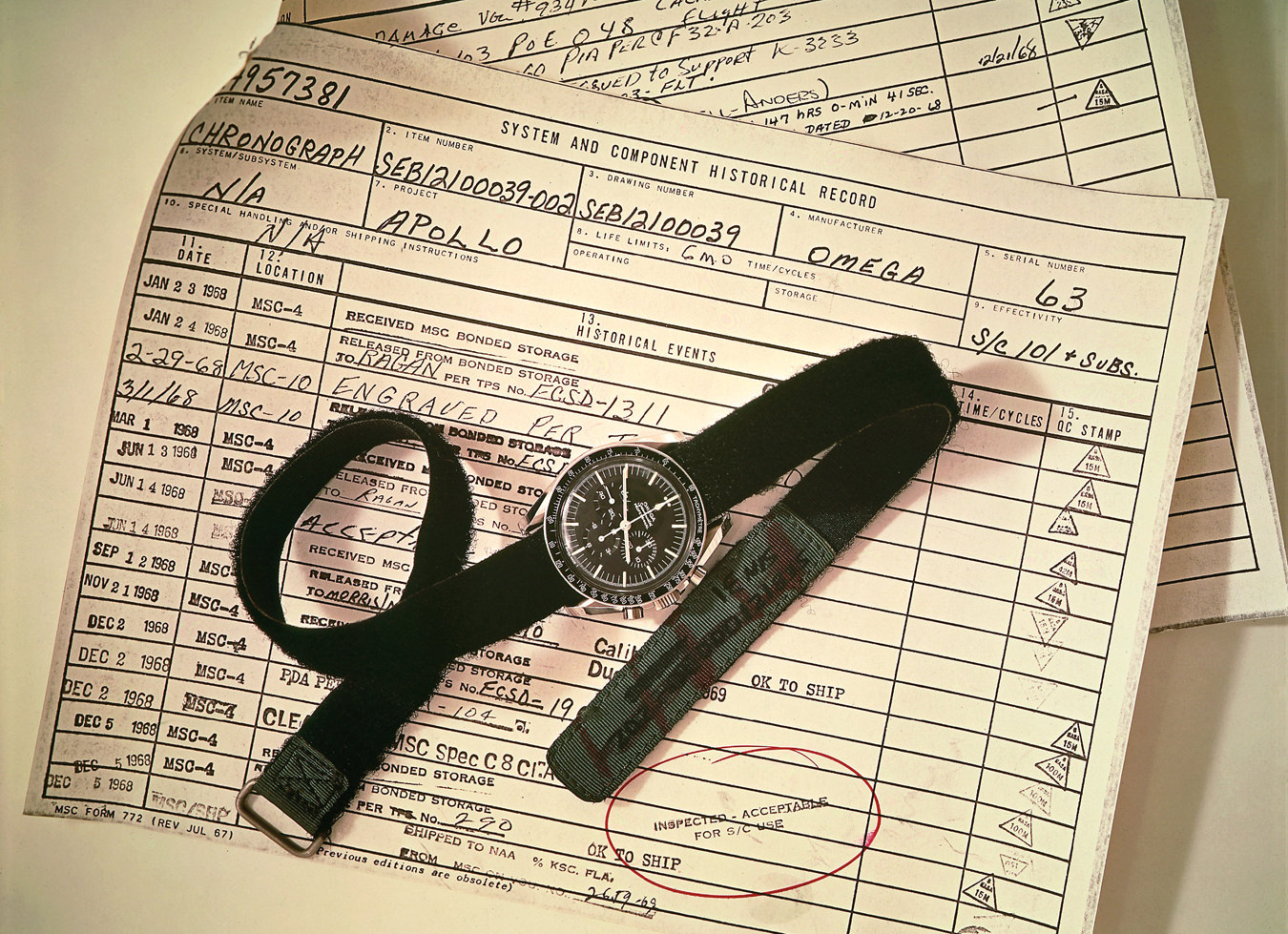
In March 1965, the Omega Speedmaster was declared “Flight Qualified for all Manned Spaced Missions”. Curiously, Omega only learned about the Speedmaster’s journey into space after seeing a photograph of Edward Higgins “Ed” White taken during America’s first spacewalk as part of the Gemini 4 mission in June of that year.
It’s not hard to believe that those who grew up in the sixties wanted the watch that went to the moon. It was that simple. What’s really impressive is that the desire was sustained; children of the children of the sixties have inherited the want. Most watch-lovers will agree that a genuinely rounded collection includes at least one Speedmaster. Of all the models out there, it’s also one of the most evolved, with later variants holding their desirability next to a vintage piece.
The official status of Omega’s Speedmaster as that of Moonwatch is widely celebrated, and yet, did it make a difference up there? Did it do enough to deserve the canonical place it has in the watch landscape? Is the Moonwatch’s legend large enough to justify the new Speedmaster models released at Baselworld this year?
The “successful failure” of the Apollo 13 mission is one of the great dramas of the 20th century and proof of the Speedmaster’s merits. “Houston, we have a problem” is a line we all recognize, even if only from the mouth of Tom Hanks in the 1995 movie Apollo 13. Those words were actually spoken by Captain James “Jim” Lovell on April 14, 1970, when the oxygen tank aboard Apollo 13 exploded. “At first, we didn’t know exactly what happened,” recounts Lovell firsthand. “We heard the explosions. We didn’t know how serious it was. We thought a meteor had hit the lunar module. We found out the oxygen tank had exploded because we looked out the window and saw the oxygen escaping. At that point, we knew we were in serious, serious trouble. Our chances of coming home were around 10 per cent.”
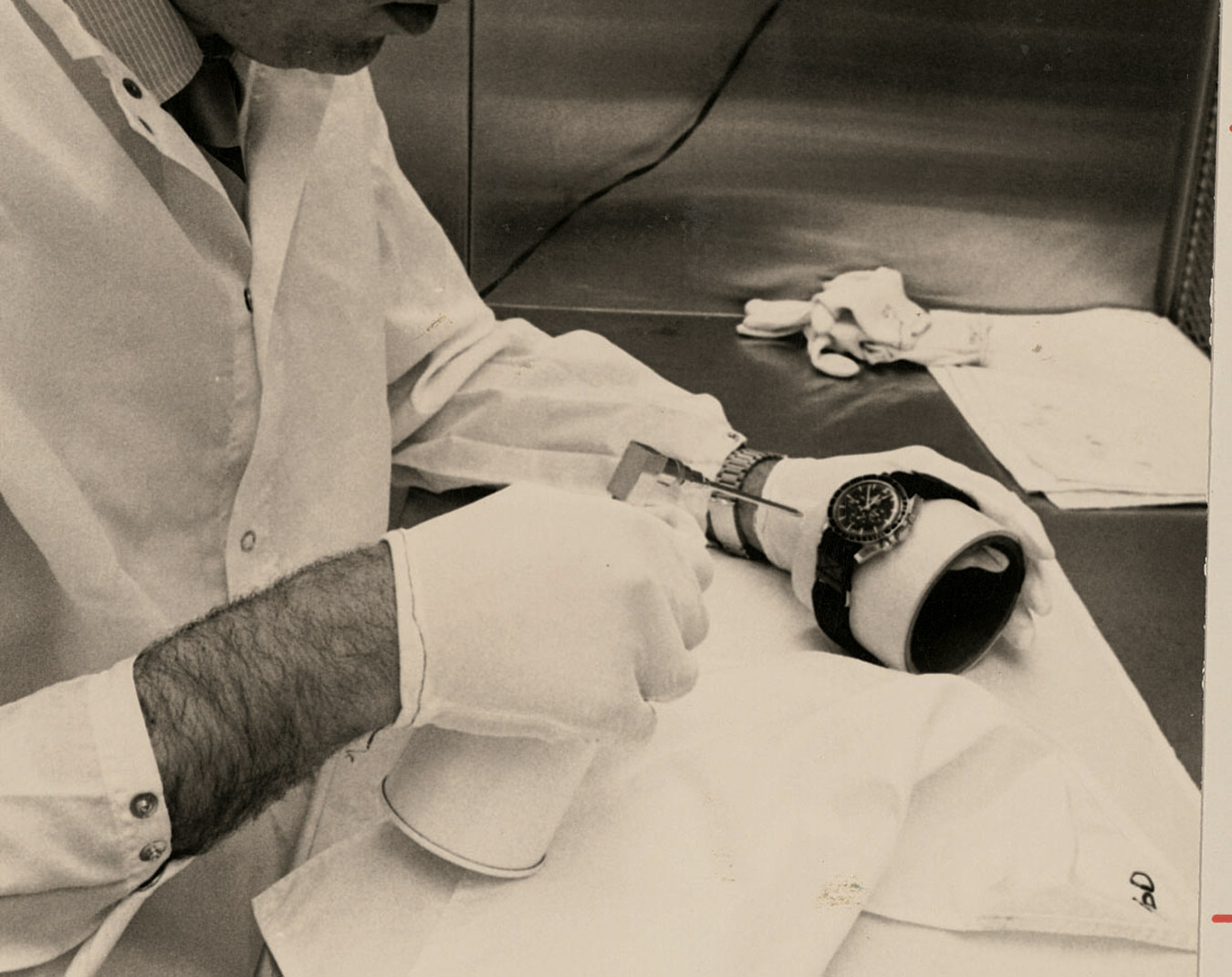
The astronauts abandoned the command module and took refuge in the lunar module, which only had limited power. “We had one last manoeuvre,” continues Lovell in a clearly tense recollection. “We found out from mission control that we were not on the proper course to make a safe landing through the atmosphere. We had to use the Omega watch to time the 14-second burn of a lunar module engine to back into the proper corridor to come back in and make a safe landing.” Timing is critical on re-entry because astronauts must make regular corrections to the path to ensure that the craft hits Earth’s atmosphere in precisely the right way. Come in too fast and the craft will burn up; come in too shallow and it would shoot them back into space. The Apollo 13 crew returned safely to Earth six days after takeoff.
For its part in getting the astronauts home, Omega was awarded the Silver Snoopy Award in 1970, NASA’s highest honour. To commemorate the 45th anniversary of Apollo 13, Omega released a limited-edition (a production run of 1,970 pieces) timepiece, the Omega Speedmaster Apollo 13 Silver Snoopy Award. The crisp white-dial watch houses a Calibre 1861 manual-winding chronograph and features the famous little cartoon “Astrobeagle”—a Super-LumiNova Snoopy lying in a classic pose on the 9 o’clock subdial, and an engraved Snoopy medallion on the case back—NASA’s mascot of aerospace safety. Fourteen small squares between zero and 14 seconds on the dial are accompanied by the words “What could you do with 14 seconds?” At the centre of the dial is the inscription: “Failure is not an option.”
Most watch-lovers will agree that a genuinely rounded collection includes at least one Omega Speedmaster.
“To put an image of Snoopy on the watch—people think it’s really strange,” says Urquhart of the Charles Schulz comic character, “but when you hear the story behind it, you realize the message. It means something. [The Apollo 13 mission] could have turned out differently, as a disaster, but it turned out fantastically and it’s something that has taken a lot of time to get the recognition it now has.” (Marketing gold, some may say, but there is no denying the Omega Speedmaster lore.)
Most Speedmasters adhere to the same basic recipe. They begin with a watch that is, regardless of its version, a highly desirable timepiece that will forever be able to lay claim to the title of “Greatest Chronograph of All Time”. They may be made of gold or ceramic or titanium, they may have dials of a different colour. They can sport logos from various NASA missions, bracelets, Velcro, or leather straps. They can have a manual movement or automatic, or, of late, one with the co-axial escapement. Suffice it to say, there are many to choose from, and to suit all tastes. And while Omega has played with the timepiece’s particulars over the years, the Speedmaster has never wavered from looking right for right now.
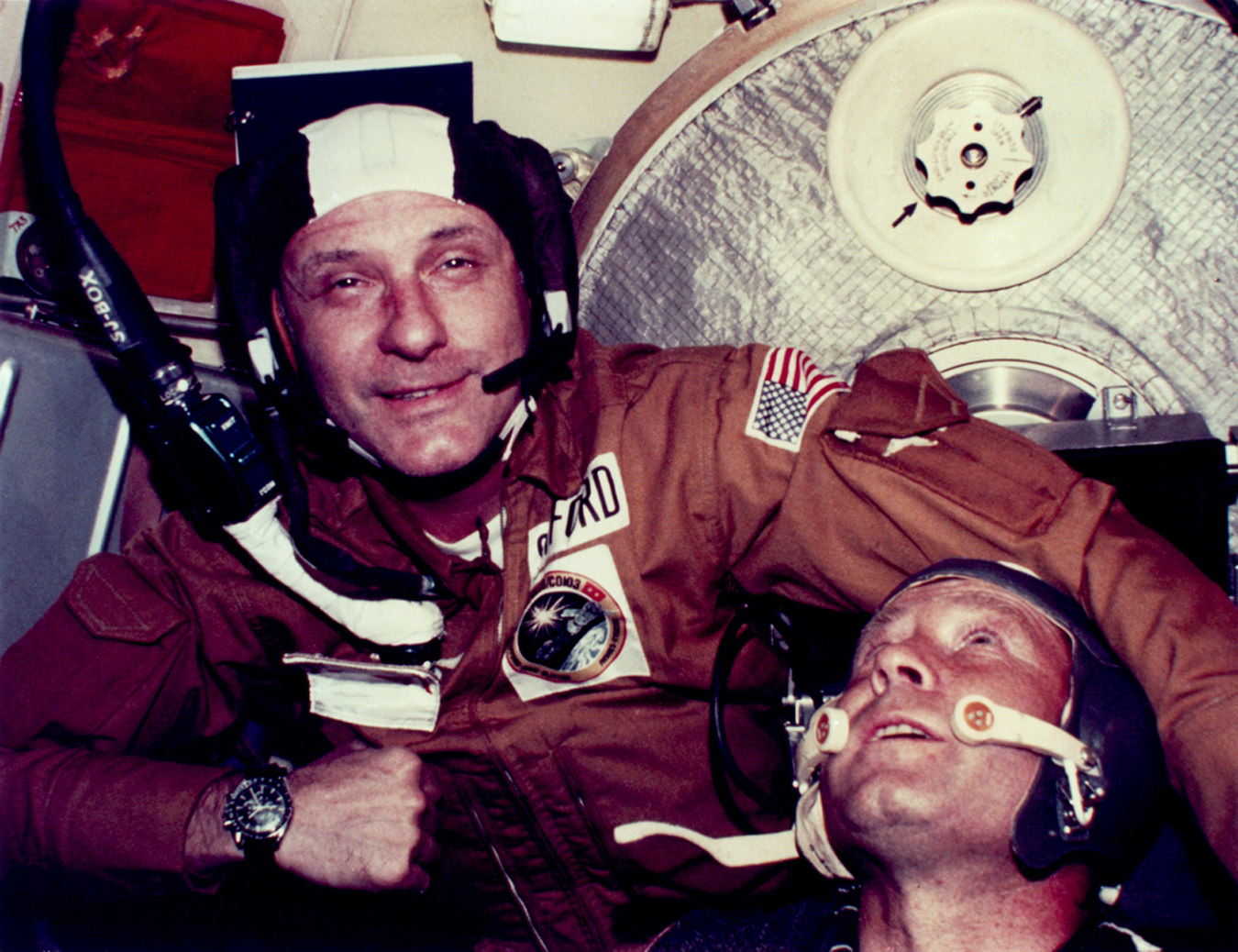
The most recent timepieces to join this famous bloodline are the Dark Side of the Moon collection, expanding with four new models: Black Black, Vintage Black, Sedna Black, and Pitch Black; and the White Side of the Moon, named for the radiant portion of the moon as seen from Earth. (The Grey Side of the Moon, the metallic silvery-grey of lunar dust, was released last year.) What makes these watches possible is the use of forged ceramic to create the case parts.
Creating the 44.25 mm Speedmaster case parts from the zirconium oxide (ZrO2) ceramic material is a demanding and time-consuming task that utilizes highly specialized processes at the Swatch Group’s in-house ceramic engineering facility. Intense heat is required to forge material blanks before laser and diamond tools are employed to brush and polish the tough surface. The Speedmaster case body is crafted from a single solid block of ceramic, and each element, including the bezel, case back, crown, push buttons, and strap buckle, is formed of the same material. The top and bottom of the ceramic watch case are scratch-resistant sapphire crystal and the Speedmasters are fitted with the Omega co-axial chronograph Calibre 9300 movement with a date-display located at six o’clock.
The moon is a place we see at night; we can often even glimpse it during the daylight. Despite its proximity and familiarity, no human has set foot there in decades, and we’re not even sure how this place came into existence. The space race is over now. The Soviet Union no longer exists, and its descendant state, Russia, is now a key space-flight partner of the United States. The first lunar landing has been described as mankind’s greatest technological achievement. Speedmaster owners possess an object that has a true and tremendous story. One that encompasses human endeavour and human bravery and that, more than anything else, is made of true grit. NASA has set its sights on getting a human to Mars by 2030. A yet-to-be-conceived Omega Speedmaster will, undoubtedly, accompany that mission.
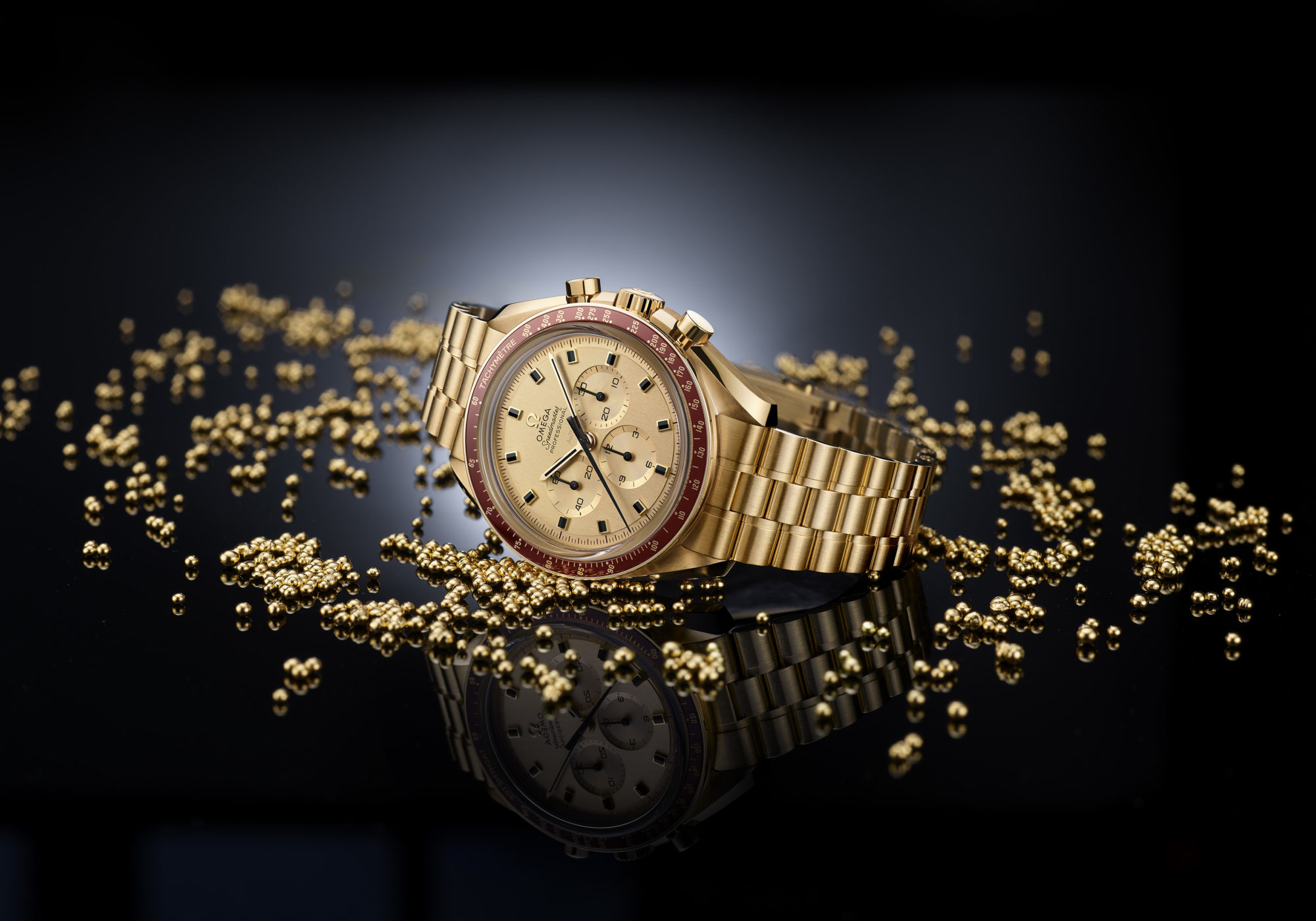
Omega is celebrating the 50th anniversary of the moon landing with a brand-new golden Speedmaster, limited to 1,014 pieces. The Omega-exclusive 18-karat gold alloy, aptly named Moonshine, forms the various elements of the watch with a 42 mm case, housing the master chronometer calibre 3861 and, remaining true to the historical timepiece, a burgundy bezel.
Originally published in our autumn 2015 issue.
_________
Never miss a story. Sign up for NUVO’s weekly newsletter here.

